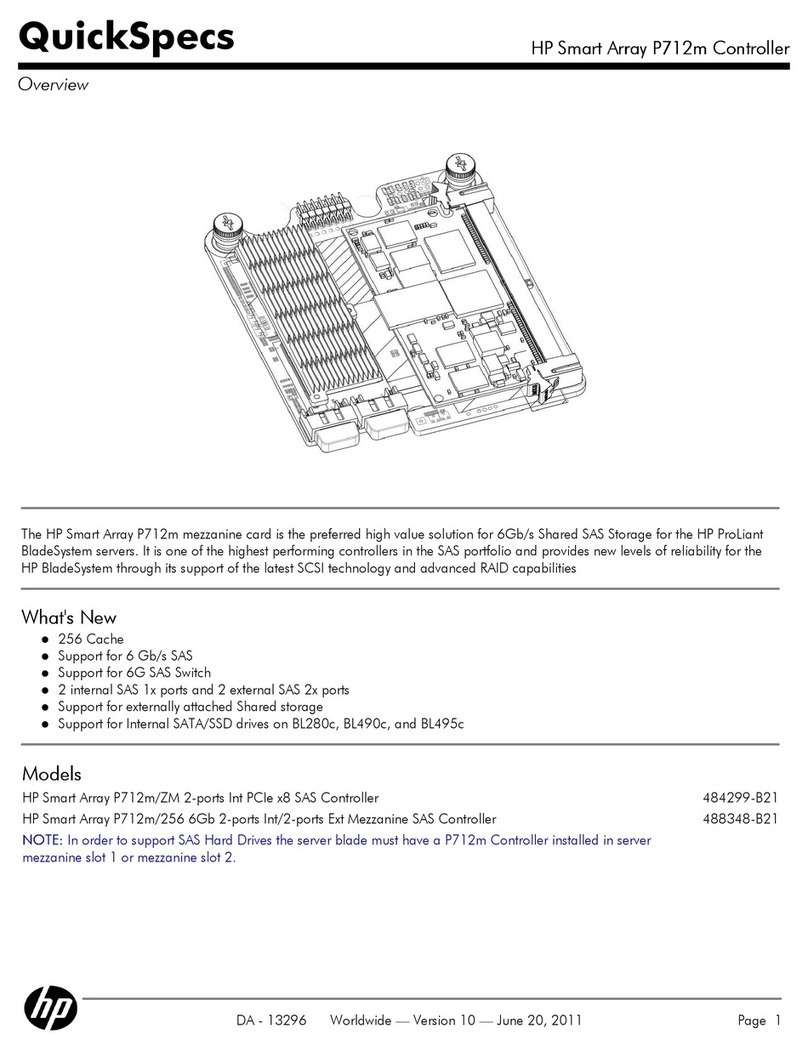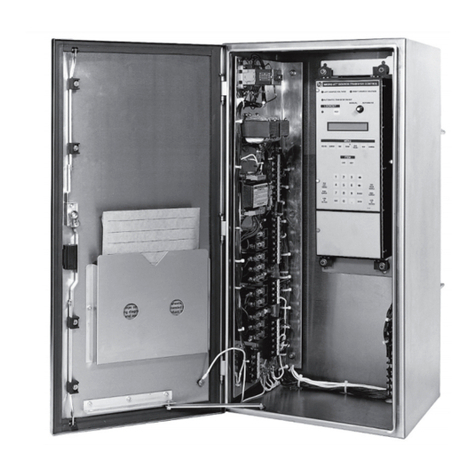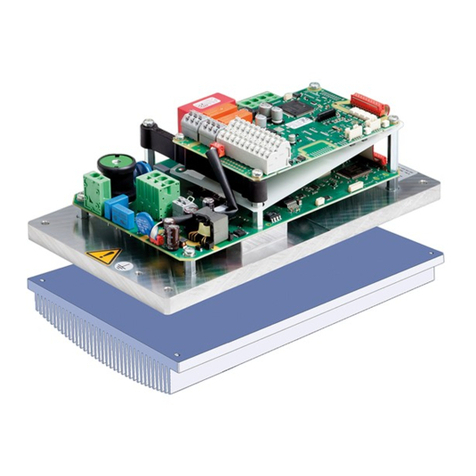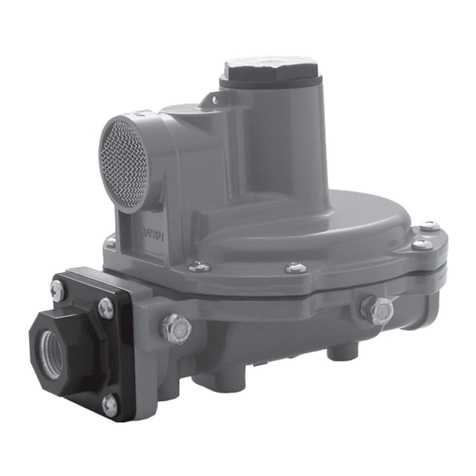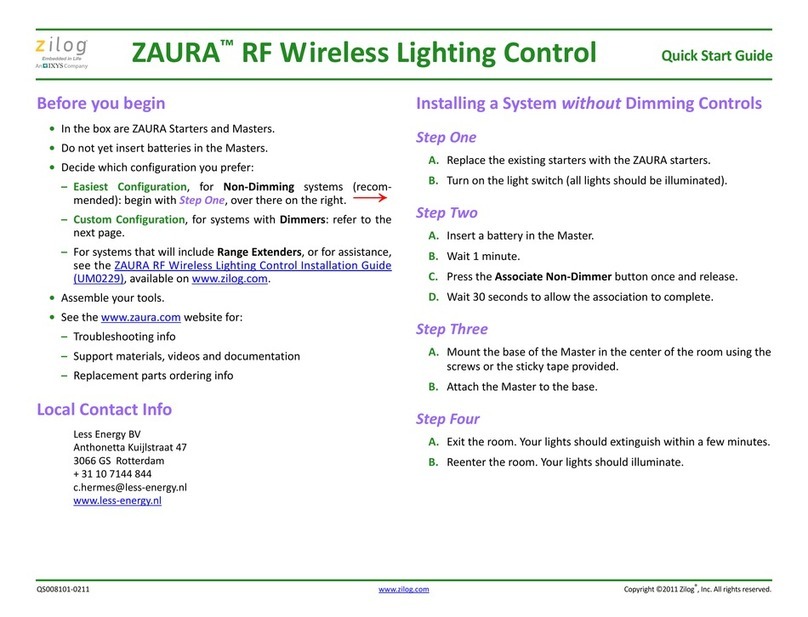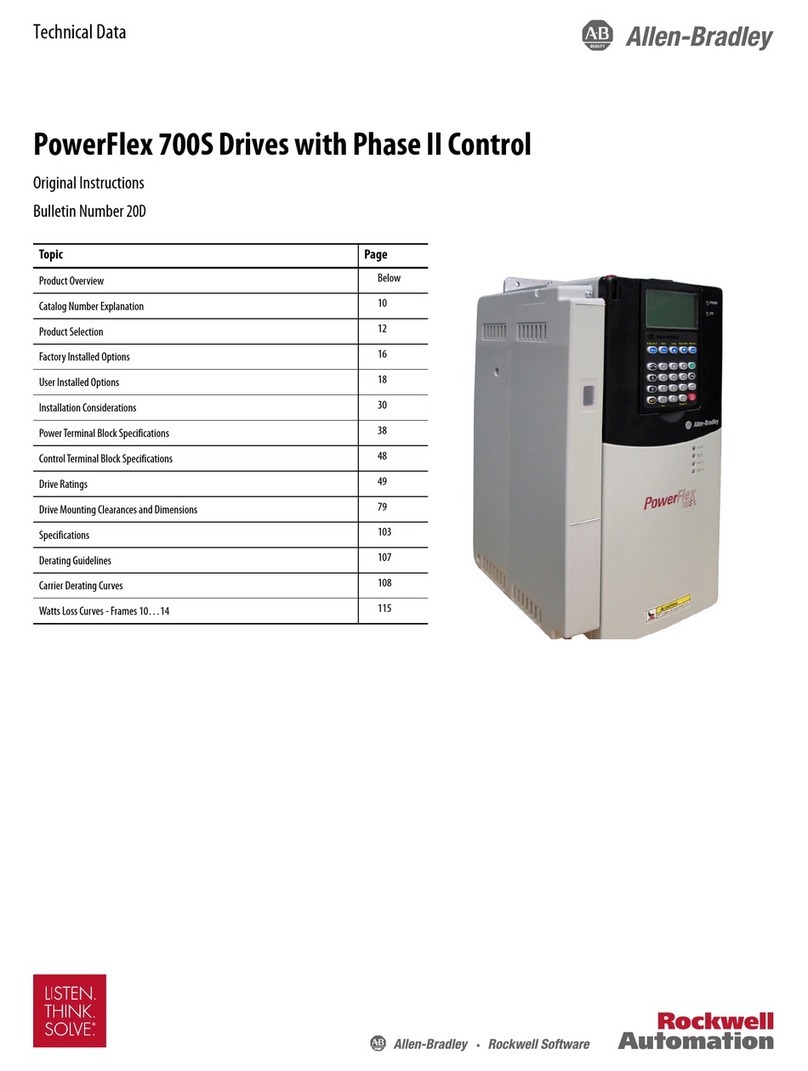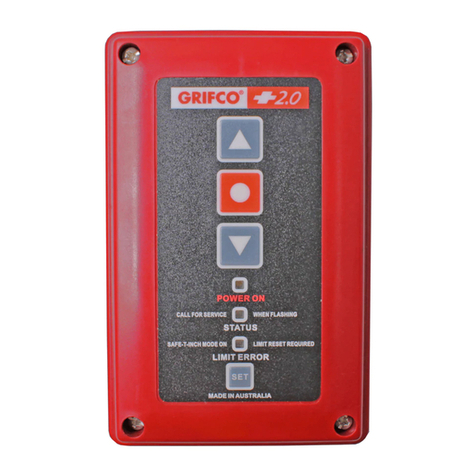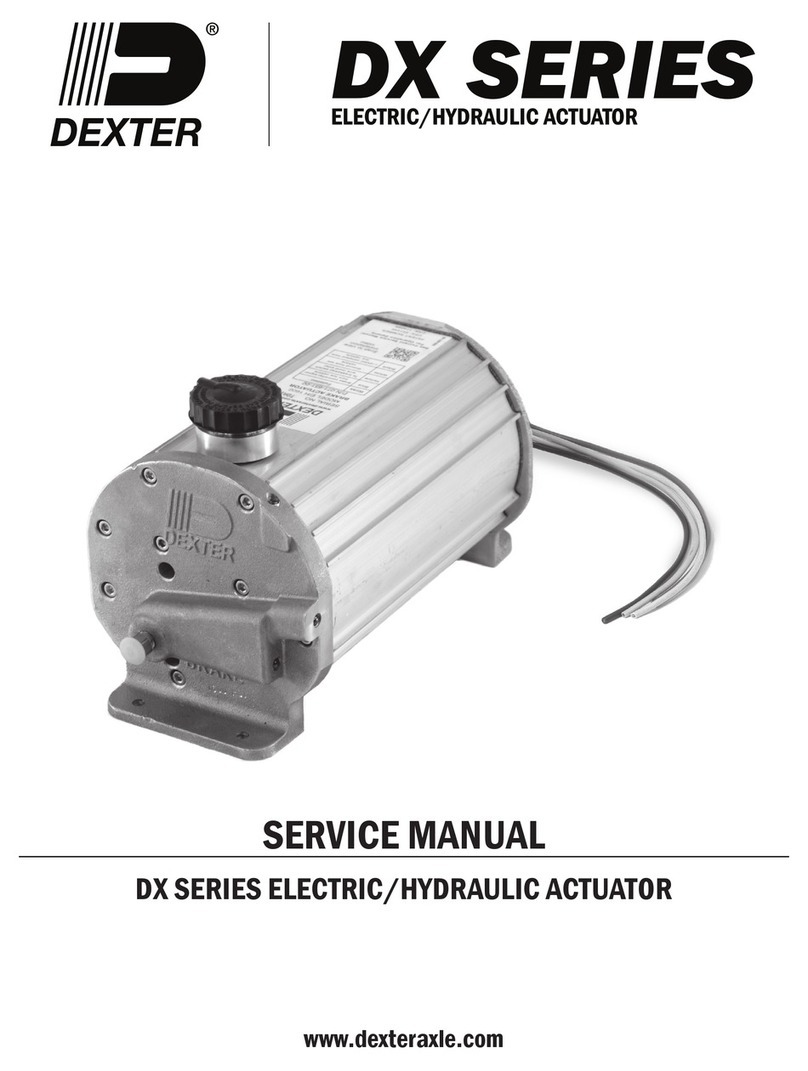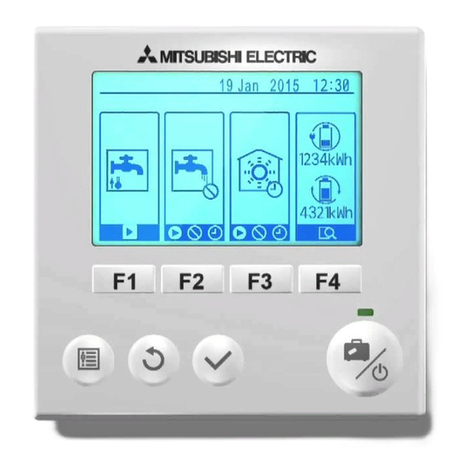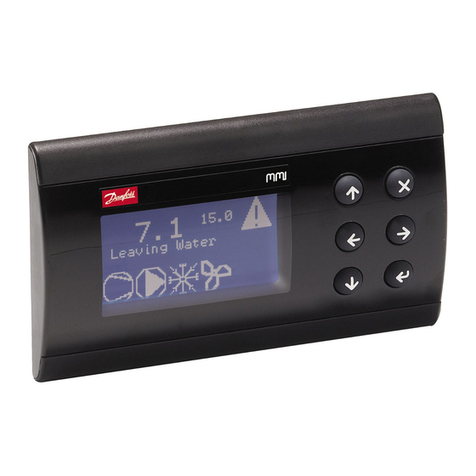Pro-Line System CS300FU User manual


1.
2.
3.
4.
5.
6.
7.
8.
9.
10.
11.
12.
13.
~
·".
Contents
Key
to
symbols
General
safety
instructions
Overview
of
products
Frequency
Converter
lnitial
Operation
Programming
with
the
LCD
monitor
Navigator
(LCD
monitor
only)
Overview
of
functions
Error
messages
and
rectification
Technical
data
EU
Declaration
of
Conformity
Appendix
Danger
of
personal
injury!
The
safety
instructions
must
be
observed!
Warning!
Danger
to
property!
The
safety
instructions
must
be
observed!
Information
Special
information
OR
Reference
to
other
sources
of
information
2
2
2
3
5
8
13
14
16
24
26
26
27
Guarantee
The
function
and
safety
of
the
equipment
is
only
guaranteed
if
the
warning
and
safety
instructions
included
in
these
opera-
ting
instructions
are
adhered
to.
The
produ
cer
is
not
liable
for
any
personal
injury
or
damage
to
property
that
occurs
as
a
result
of
the
warning
and
safety
instructions
being
disregarded
.
Using
the
equipment
for
its
intended
purpose
The
es
300
FU
controls
are
designed
only
for
controlling
gates
and
doors
with
digital
end
position
systems
and
integrated
frequency
converters.
It
is
only
permitted
to
operate
the
equipment
in
dry
rooms
.
Target
group
Only
qualified
and
trained
electricians
may
connect,
program
me
and
service
the
controls.
Qualified
and
trained
electricians
meet
the
following
requirements
:
-
knowledge
of
the
general
and
specific
safety
and
accident
prevention
regulations,
-
knowledge
of
the
relevant
electrical
regulations,
-
trained
in
the
use
and
care
of
appropriate
safety
equipment,
-
capable
of
recognising
the
dangers
associated
with
electricity.
lnstructions
for
installation
and
connection
-The
controls
must
be
disconnected
from
the
electricity
supply
before
carrying
out
electrical
works.
After
the
disconnection
there
will
be
a
residual
voltage
.
Therefore
a
safety
period
of
180
seconds
must
be
adhered
to.
During
the
works
the
electricity
supply
must
rema
in
disconnected.
-
Local
protective
regulations
must
be
complied
with.
-
Mains
cables
and
control
cables
must
be
laid
separately
.

Regulations
and
bases
for
testing
For
connecting,
programming
and
servicing,
the
following
regulations
must
be
observed
(the
list
is
not
exhaustive).
eonstruction
product
standards
-
EN
13241-1
(Products
without
fire
resistance
or
smoke
control
characteristics)
-
EN
12445
(Safety
in
use
of
power
operated
doors-
Test
methods)
-
EN
12453
(Safety
in
use
of
power
operated
doors
-
Requirements)
-
EN
12978
(Safety
devices
for
power
operated
doors
and
gates
-
Requirements
and
test
methods)
Electromagnetic
compatibility
-
EN
55014-1
(Radio
disturbance,
household
appliances)
-
EN
61000-3-2
(Disturbances
in
supply
systems-
harmonic
currents)
-EN
61000-3-3
(Disturbances
in
supply
systems-
voltage
fluctuations)
-
EN
61
000-6-2
(Eiectromagnetic
compatibility
(EMe)
-
Part
6-2:
Gen
eric
standards-
lmmunity
for
industrial
environments)
-
EN
61000-6-3
(Eiectromagnetic
compatibility
(EMe)-
Part
6-3:
Generic
standards-
Emission
standard
for
residential,
commercial
and
light-industrial
environments)
Machinery
guidelines
-
EN
60204-1
(Safety
of
machinery,
electrical
equipment
of
machines,
part
1:
general
requirements)
-
EN
12100-1
(Safety
of
machinery
.
Basic
concepts,
general
principles
for
design.
Basic
terminology,
methodology)
Low
voltage
-
EN
60335-1
(Household
and
similar
electrical
appliances
-
Safety)
-
EN
60335-2-103
(Particular
requirements
for
drives
for
gates,
doors
and
windows)
Professional
association
(D)
-
BGR
232
(Directive
for
Power-driven
Windows,
Doors
and
Gates)
';·
~
".'
4.1
Various
options
eS300
FU
controls
can
be
supplied
with
the
option
of
a
frequency
converter
module
integrated
in
the
control
housing
(model
es
300
FU-E)
or
a
frequency
converter
integrated
in
the
door
or
gate
operator
(model
es
300
FU-l).
The
following
package
options
are
available
for
both
versions
of
the
es
300
FU
control:
-es
300
FU
control
with
LeD
monitor
-
es
300
FU
control
with
LCD
monitor
in
housing
-es
300
FU
controls
without
LCD
monitor
(monitor
is
required
for
adjusting
the
settings)
All
the
above
options
can
be
fitted
with
a
plug-in
weekly
timer
and
a
plug-in
radio
receiver.
The
following
options
are
available
for
the
housing.
-
housing
with
es
3-button
input
switch
-
housing
with
OPEN-STOP-eLOSE
-button
input
unit
-
housing
with
key
switch
ON/OFF
-
housing
with
ma
in
switch
-
housing
with
emergency
off
switch
The
operating
instructions
describe
the
connection
possibili-
ties
and
programming
procedures
for
the
different
models:
-
es
300
FU-E
control
with
attached
LCD
display
board
-
es
300
FU-l
control
with
attached
LeD
display
board

4.3
CS
300
FU
0,75
basic
board
(with
attached
LCD
display
monitor)
Key:
X1:
mains
connection
(mains)
terminal
block
1
power
supply
frequency
converter
(FC)
X2
:
terminal
block
for
FC
data
cable
=
X3:
terminal
block
command
devices
X4
:
terminal
block
Xll
1
r··········
·
········~·
·
r~
IXlo®
~
:
@j
t..
.
-----
-
-----------
- ~
f
·rn
~12
g
1 o
X6[j]
'rn
X7 g
1 g
safety
elements
X5:
terminal
block
relay
X6:
sockets
for
interna!
ON-OFF
switch
X7
:
sockets
for
interna!
3-button
input
unit
X8:
socket
for
monitor
(under
monitor)
X9:
sockets
for
radio
receiver
X10:
sockets
for
weekly
timer
D
X11:
sockets
for
digital
limit
switch
Xl
CJ
ID I
CJ
CJ
I
CJ
I
CJ
CJ
i
c::::J
I
CJ
CJICJ
I
CJ
1
~1~
1
~
1
~
:
~
1
~
1
~
1
~
1
~
~1~
1
~1
1 1
11 11 11
o
=:
I
::J
I
:J
iz
1
~
1
~
~
~
1
~
1
=:
I
::J
1
:3
1z
system
with
safety
circuit
(STOP
CIRCUIT)
X12:
socket
for
external
radio
receiver
X13:
terminal
block
for
es
three-
button
input
unit
H4:
status
display
for
safety
edge
protection
(SEP)-
illuminated
when
SEP
is
working
H5
:
status
display
frequency
converter
(FC)
-
lights
up
when
the
FC
is
ready
H6
:
Safety
circu
it
status
message
-
lights
up
when
the
safety
circuit
is
closed

·, .
General
The
frequency
control
system
allows
the
door
speed
to
be
adjusted
separately
for
the
OPEN
and
CLOSE
directions.
The
acceleration
and
retardation
times
(SPEED
UP
1
SLOW
DOWN)
ensure
a
gentle
start
and
stop
at
the
end
positions.
The
frequency
of
the
converter
determines
the
operator
speed
.
Adjustable
Values
The
following
values
can
be
adjusted
in
the
input
menu.
SPEED
UP
Acceleration
time
from
minimum
speed
to
maximum
speed.
SLOW
DOWN
Retardation
time
from
maximum
speed
to
minimum
speed.
MIN
SPEED
OPEN
Minimum
speed
of
the
drive
for
the
OPEN
run
(creep
speed).
MAX
SPEED
OPEN
Maximum
speed
of
the
drive
for
the
OPEN
run.
MIN
SPEED
CLOSE
Minimum
speed
of
the
drive
for
the
CLOSE
run
(creep
speed).
MAX
SPEED
CLOSE
Maximum
speed
of
the
drive
for
the
CLOSE
run
.
BRAKE
POINT
OPEN
The
bra
ke
point
for
the
OPEN
run
lies
before
the
OPEN
limit
switch
value
.
When
the
OPEN
brake
point
is
passed,
the
retardation
time
SLOW
DOWN
is
triggered.
BRAKE
POINT
CLOSE
The
bra
ke
point
for
the
CLOSE
run
lies
before
the
CLOSE
limit
switch
value
.
When
the
CLOSE
brake
point
is
passed,
the
retardation
time
SLOW
DOWN
is
triggered.
U
START
The
start-up
voltage
increases
the
performance
of
the
door
operators
at
low
rotational
speeds.
lf
the
start-up
voltage
is
set
too
high
or
too
low,
the
door
or
gate
may
not
run
properly.
The
start-up
voltage
can
be
set
between
OV
and
42V.
lf
the
start-up
voltage
is
too
high,
this
will
result
in
an
over-
current
fault
(FU2).
The
start-up
voltage
must
be
reduced
in
this
case.
lf
the
start-up
voltage
is
too
low,
then
the
motor
will
not
have
sufficient
power
to
move
the
door.
The
start-up
voltage
must
be
increased
in
this
case.
Due
to
the
variety
of
different
types
of
doors
and
gates,
the
correct
start-up
voltage
setting
must
be
obtained
through
practical
trials.
BRAKE
RETARDATION
ln
the
case
of
drives
with
a
bra
ke
and
low
self-locking
(high
speed
door
drives},
the
brake
release
must
be
retarded
when
the
door
or
gate
starts
moving
to
prevent
the
door
from
dropping
.
This
parameter
can
be
ignored
in
the
case
of
weight
counter-
balanced
doors
and
gates.
RATED
FREQUENCY
The
frequency
rating
parameter
must
be
set
to
the
rated
frequency
of
the
motor.
There
are
three
modes
available
.

Opening
Run
of
the
Door/Gate
Hz
E
2 1 1
6
181
4
1 3 5 7 9
Fl
n
A
MIN
SPEED
OPEN
B
MAX
SPEED
OPEN
C
SPEED
UP
D
E
1.
2.
3.
4.
5.
6.
7.
8.
9.
SLOW
DOWN
OPEN
brake
point
The
door/gate
moves
in
the
OPEN
direction.
nie
frequency
converter
accelerates
over
an
accelera-
tion
period
SPEED
UP
(C)
to
reach
its
maximum
speed
MA
X
SPEED
OPEN
(B).
The
door/gate
reaches
its
maximum
speed
MAX
SPEED
OPEN
(B).
The
door/gate
travels
at
the
maximum
speed
MAX
SPEED
OPEN
(B)
.
The
OPEN
brake
point
(E)
is
triggered
and
activates
the
soft
run
in
the
OPEN
direction
.
The
frequency
converter
reduces
the
speed
over
the
retardation
period
SLOW
DOWN
(D)
to
reach
the
minimum
speed
MIN
SPEED
OPEN
(A).
The
door
/
gate
reaches
its
minimum
speed
MIN
SPEED
OPEN
(A).
The
door/gate
travels
at
the
minimum
speed
MIN
SPEED
OPEN
(A).
The
door/gate
stops
at
the
upper
end
position.
Closing
run
of
the
door/gate
Hz
J
1 1
2 4 6
181
1 3 5 7 9
n 1=1
F
MIN
SPEED
CLOSE
G
MAX
SPEED
CLOSE
H
SPEED
UP
1.
2.
3.
4.
5.
6.
7.
8.
9.
SLOW
DOWN
CLOSE
brake
point
The
door/gate
starts
to
move
in
the
CLOSE
direction.
The
frequency
converter
accelerates
over
an
accelera-
tion
period
SPEED
UP
(C)
to
reach
its
maximum
speed
MAX
SPEED
OPEN
(B).
The
door/gate
reaches
its
maximum
speed
MAX
SPEED
CLOSE
(B).
The
door/gate
travels
at
the
maximum
speed
MAX
SPEED
CLOSE
(B).
The
CLOSE
brake
point
(E)
is
triggered
and
activates
the
soft
run
in
the
CLOSE
direction.
The
frequency
converter
reduces
the
speed
over
the
retardation
period
SLOW
DOWN
(D)
to
reach
the
minimum
speed
MIN
SPEED
CLOSE
(A)
.
The
door/gate
reaches
its
minimum
speed
MIN
SPEED
CLOSE
(A).
The
door/gate
travels
at
the
minimum
speed
MIN
SPEED
CLOSE
(A).
The
door/gate
stops
at
the
lower
end
position.

Effective
OPEN
DOOR
acceleration
time
-
Example
showing
change
of
frequency
setting
Hz
t =
seconds
Information:
The
time
values
set
for
SPEED
UP
1
SLOW
DOWN
a/ways
re/ate
to
the
maximum
values
of
O
Hz
to
1
OO
Hz.
The
drive
a/ways
starts
with
MIN
SPEED
OPEN.
The
values
set:
A
MIN
SPEED
OPEN
30Hz
B1
MAX
SPEED
OPEN
50
Hz
B2
MAX
SPEED
OPEN
90Hz
c
SPEED
UP
1
second
01
Effective
acceleration
time
1
02
Effective
acceleration
time
2
lf
the
time
for
SPE
ED
UP
(C)
is
set
to
1
second,
the
effective
acceleration
time
(01)
from
30Hz
to
50
Hz
is
0.2
seconds.
lf
the
setting
for
MAX
SPE
ED
OPEN
is
increased
to
90
Hz
(82),
the
resulting
effective
acceleration
time
(02)
is
0.6
seconds.
Effective
OPEN
DOOR
acceleration
time
-
Example
showing
change
of
time
setting
Hz
Cl
C2
100
90
80
70
60
50 /
40 /
/
30
20
10
o
t =
seconds
Information:
The
values
set
for
SPEED
UP
1
SLOW
DOWN
always
re/ate
to
the
maximum
values
ofO
Hz
to
100Hz.
The
drive
a!ways
starts
with
MIN
SPEED
OPEN.
The
values
set:
A
MIN
SPE
ED
OPEN
30
Hz
B
MAX
SPEED
OPEN
50
Hz
C1
SPEED
UP
1
second
C2
SPEED
UP
2
seconds
01
Effective
acceleration
time
1
02
Effective
acceleration
time
2
lf
the
time
for
SPE
ED
UP
(C)
is
set
to
1
second,
the
effective
acceleration
time
(C
1)
from
30
Hz
to
50
Hz
is
0.2
second
s.
lf
the
SPE
ED
UP
time
is
increased
to
2
seconds
(C2),
the
resulting
effective
acceleration
time
(02)
is
0.4
seconds.

6.1
General
Warning!
To
guarantee
that
the
equipment
functions
properly,
the
following
points
must
be
ensured:
-
The
gate
or
door
is
installed
and
operational.
-
The
com
mand
and
safety
devices
are
installed
and
ready
for
operation.
-
The
control
housing
with
the
CS
300
FU
control
is
installed.
Information:
For
the
installation
of
the
gate!door,
the
MFZ
drive
motor
and
the
command
and
safety
devices,
the
re
leva
nt
manufacturer's
instructions
are
to
be
adhered
to.
6.2
Connection
of
Drive
-
Controls
Model
CS300
FU-l,
frequency
converter
module
integrated
in
drive
A
B
c
D
E
F
G
A
AVE
plug
B
AVE
plug
terminal
C
Motor
output
FU
(U2,
V2,
W2),
Temperature
sensor,
optional
D
Plug
connection
for
data
cable
FU
E
LED
operation
FU
F
Connection
of
brake
resistance
(R-,
R+)
G
Power
supply
FU,
230V
(U
1,
N,
PE)
Connection
to
CS
300
FU
Controls:
o
Connect
power
supply
FU
(G)
at
terminal
Xl.
o
Connect
AVE
plug
(A)
at
terminal
X11.
O
Connect
data
cable
FU
(D)
at
terminal
X2.

Model
CS300
FU-E,
external
frequency
converter
module,
0.75
KW
G
F
E
Oo
1
~
l i
~i
l
~
~ ~
c
Motor
output
FU
(U2,
V2,
W2),
Temperature
sensor,
optional
D
Plug
connection
for
data
cable
FU
E
LED
operation
FU
F
Connection
of
bra
ke
resistance
(R-,
R+)
G
Power
supply
FU,
230V
(U
1,
N,
PE)
Model
CS300
FU-E,
external
frequency
converter
module,
1.5
KW
13
KW
Oo
-
1
li
il
--
-
~
~
~
-
c
Motor
output
FU
(U2,
V2,
W2),
Temperature
sensor,
optional
D
Plug
connection
for
data
cable
FU
E
LED
operation
FU
F
Connection
of
bra
ke
resistance
(R-,
R+)
G
Power
supply
FU,
400V
AC

6.3
Mains
connection
Danger!
To
guarantee
that
the
controls
function
pro-
perly,
the
following
points
must
be
ensured
:
-
The
mains
voltage
must
correspond
to
the
vo/tage
stated
on
the
type
plate
.
-
For
a
permanent
connection,
an
all-pole
main
switch
must
be
used.
-
The
drive
cover
must
be
closed.
Warning!
Before
switching
on
the
controls
for
the
first
time,
a
check
must
be
carried
out
after
com-
p/eting
the
wiring
to
ensure
that
all
the
motor
connections
at
the
motor
and
at
the
controls
are
securely
fixed.
All
control
voltage
inputs
are
galvanically
isolated
from
the
supply
For
all
components
to
be
connected
to
the
controls,
at
/east
one
additional
isolation
with
a
rated
voltage
of>
230
V
is
recommended
.
Detailed
circuit
diagram
for
mains
connection
(230
V
AC
1-phase
10.75
KW)
,1'
,IJ
Tl
Jf
2 4 6
lZJ:3
=1=1= = =
==
=1= = = =
1~
1
~
1
~
~ ~
~~~
~
~
~
~ ~ ~
1
.-i
INIM w w1w~
~
.-iN
M
_J _J _J
z
0....
o....
o...
0....
_J_J
_J
z
Detailed
circuit
diagram
for
mains
connection
(400
V
AC
3-phase
/1.5
KW
or
3
KW)
J,
,IJ
Tl
,r
2 4 6
lZJ:3
=1= = =1=1= =1
===
1=1=
1~
~
~
~
~
~
~
~
1
~
1
~1~
1
~
1
~1
1 1 1 1
.-i
NM
w
1
ww
l
~
l
.-i
i
N
I
M
I
_J
-l
-lZO....
0....0....
O...
-l-l
-l
Z
Key:
X1:
terminal
block
for
mains
connection
Connection:
O
Connect
the
control
to
the
mains.
o
Short
before
the
corresponding
screw
terminals,
groups
of
cables
should
be
make
safe
by
means
of
stra
ps
.
Information:
Technical
data
see
page
26
.

6.4
Allocation
of
connections
for
command
and
safety
devices
Com
mand
and
safety
devices
can
be
connected
to
termina
Is
X3,
X4
and
X5.
Terminal
block
X3
Terminal
block
X4
-
CLOSE
switch
-
impulse
switch
1
-OPEN
switch
-
STOP
switch,
Wicket
door
switch,
draw-in
protection
-
Emergency
off,
slack
rope
switch
(for
optoelectronic
safety
edge
protection)
1
sequence
control
2
button
or
selector
switch
3
effective
in
dawn
direction
-
PART-
OPEN
2
-
safety
edge
protection
OPTO
-
photoelectric
drive-through
barrier
3
-
24
V
DC
1
250
mN
4
for
external
switching
devices
(connection
to
terminals
1
and
2)
wt:
white
gr:
green
br:
brown
Terminal
block
X4
(for
8.2
kOhm
safety
edge
protection)
-
PART
-
OPEN
2
-
safety
edge
protection
-
photoelectric
drive-through
barrier
3
-
24
V
DC
1
250
mN
Terminal
block
X4
(for
pneumatic
safety
edge
protection
-
pressure
sensor
test:
- A
8.2
kO
hm
resistor
must
be
connected
in
series
-
The
input
parameter
SEP
TEST
must
be
switched
on)
-
PART-
OPEN
2
-
safety
edge
protection
-
photoelectric
drive-through
barrier
3
-
24
V
DC/
250
mN
Terminal
block
X4
(for
three-wire
photoelectric
barrier)
9
8
7
6
5
4
3 -
Three-wire
photoelectric
barrier
2
1

Terminal
block
X5
(potential
free
switch
contact)
6.5
Connection
examples
for
command
and
safety
devices
(terminal
block
X3)
OPEN
1
STOP
1
CLOSE
buttons
(6-lead
solution)
-
CLOSE
button
-
OPEN
button
-
STOP
button
OPEN
1
STOP
1
CLOSE
buttons
(4-lead
solution)
-
CLOSE
button
-
OPEN
button
-
STOP
button
Key
switch
OPEN
1
CLOSE
lmpulse
button
(sequence
control)
Connection:
-
CLOSE
-OPEN
-
impulse
button
D
Connect
the
com
mand
and
safety
devices
to
the
control.

'~)
7.1
Overview
of
the
LCD
monitor
H
A
-++---t+AUTOMATIC
8
RESTING
Key:
A:
B:
C:
D:
E:
F:
G:
H:
C D
mode
of
operation
1
diagnostic
info
parameter
1
diagnostic
info
(+)button
(-)button
(P)
button
value
1
status
value
1
status
jumper
E
0 -H---++ G
++-++
F
7.2
LCD
monitor,
mod
es
of
operation
The
control
has
four
modes
of
operation
with
the
LCD
monitor:
1.
AUTO
MATIC
2.
ADJUSTMENT
3.1NPUT
4.
DIAGNOSIS
When
the
jumper
H
is
pul
led,
the
+
button,
the
-
button
and
the
P
button
have
no
function.
The
display
stili
functions.
Operating
mode
1:
AUTO
MATIC
ln
the
AUTO
MATIC
operating
mode
the
door
system
is
operated.
Display:
-
displays
the
function
being
carried
out
-
displays
any
error
messages
lf
the
.,self
locking"
parameter
is
set
to
MOD2
or
MOD3
in
the
input
menu,
the
display
changes
from
AUTOMATIC
to
MANUAL
OPERATION.
Operating
mode
2:
ADJUSTMENT
ln
the
ADJUSTMENT
mode,
the
OPEN/CLOSED
end
position
settings
are
adjusted
.
Warning!
ln
the
ADJUSTMENT
mode
of
operation,
the
drive
does
not
switch
off
when
the
end
position
is
reached.
The
drive
moves
at
maximum
speed.
The
door
can
be
damaged
if
driven
beyond
the
end
position.
Fine
adjustments
can
be
made
in
the
INPUT
operating
mode
.
Display:
-
displays
the
end
position
value
Operating
mode
3:
INPUT
ln
the
INPUT
operating
mode,
the
values
of
various
parame-
ters
can
be
altered.
Display:
-
displays
the
selected
parameter
-
displays
the
program
med
value
/status
Operating
mode
4:
DIAGNOSIS
ln
the
DIAGNOSIS
operating
mode,
door-specific
checks
can
be
queried.
Display
-
displays
the
check
-
displays
the
checking
status

·.
----
!Ol
AUTOMATIC
~
RESTING
~
• ®
>1
Sec.
ADJUSTMENT
RESTING
• ® > 1
Sec.
1
~·1
'"'"'
J
0
->
Position
DOOR
OPEN
0
·>
Position
DOOR
CLOSED
0
and
Q > 2
Sec.~
ADJUSTMENT
MANUAL
UP
ADJUSTMENT
MANUAL DOWN
INPUT
GERMAN
INPUT
RUNNING TIME
INPUT
TIME OPEN
INPUT
FOREWARNING
INPUT TURN-
TURNAROUND TIME
INPUT
M1-3
RESTING
INPUT
QUICK
CLOSE
INPUT
RELAY
1
INPUT
RELAY
2
INPUT
RELAY
3
INPUT
RELAY
4
INPUT
SEP
TEST
INPUT
DELAY
OPEN
INPUT
FINE
OPEN
INPUT
FINE
CLOSE
INPUT
BES
OPEN
INPUT
BES
CLOSE
INPUT
ROTAT
ING
FIELD
INPUT
REVERSE
OFF
INPUT
A
UTO
LEVEL
Save
door position:
® Hold Ppressed and
0 > 1
Sec.
Save
door position:
® Hold Ppressed and
0
>1
Sec.
Scroll up through menu:
0 > 2
Sec.
60
Scroll dawn through menu:
O > 2
Sec.
o Select value:
o ®
>1
Sec.
Incr
ease
value:
0,3
0
Decrease value:
Mod1 o
OFF
Save
va
lue:
®
:
Mod6
Return to
INPUT
:
:
Mod7
0 and O > 1
Sec.
: Mod1
Mod14
:
OFF
:
OFF
4050
3950
4000
:
4000
:
RE
50
:
OFF

INPUT
SELF
LOCK
MOD1
INPUT
Sl:J/WI
MOD5
®>1
Sec.
INPUT
P/E
BARRIER
OPEN
MOD2
INPUT
P/E
BARRIER
CLOSED
:
MOD1
INPUT
SEP
LEADING
MOD1
INPUT
MAX
OPEN
SPE
ED
: 50
INPUT
MIN
OPEN
SPEED
: 20
INPUT
MAX
CLOSE
SPE
ED
50
INPUT
MIN
CLOSE
SPEED
: 20
INPUT
SPEED
UP
1.0
INPUT
SLOW
DOWN
: 150
INPUT
BRAKE
P
OPEN
250
INPUT
BRAKE
P
CLOSE
: 250
INPUT
F
START
:
3Hz
INPUT
U
START
: 20V
INPUT
BRAKE
RETARDATION
50
INPUT
RATED
FREQUENCY
MOD1
INPUT
P/E
BARRIER
300
[f!]
Scroll
up
through
menu:
DIAGNOSIS
@>2Sec.
Scroll
dawn through
menu:
OIAGNOSIS
: R2.0
O>
2
Sec.
011
00703
Return
to
AUTO
MATIC
DRAW-IN P
OPEN
ON
operating
mode:
DRAW-IN
P
CLOSE
:
ON
®
OPEN
BUTTON
OFF
PART
OPEN
OFF
CLOSE
BUTTON
OFF
Only
query
is
possible
SEP
:
ON
IM
PULS
OFF
TIMER
OFF
P/E
BARRIER
ON
STOP
CIRCUIT
ON
CYCLE
: 4
AVE
2599

9.1
Automatic operating
mode
Display
AUTO
MATIC
OPENING
AUTO
MATIC
CLOSING
AUTO
MATIC
RESTING
AUTO
MATIC
RESTING
AUTO
MATIC
RESTING
AUTO
MATIC
RESTING
AUTO
MAT
IC
RESTING
AUTO
MATIC
RESTING
o
o
u
Information:
Description
The
door
is
driven
to
the
OPEN*
end
position*
The
door
is
driven
to
the
CLOSED*
end
position
The
door
stands
between
the
end
positions
The
door
stands
at
the
OPEN
end
position
The
door
stands
at
the
position
PART
OPEN
("before-end
position"
up)
The
door
stands
at
the
CLOSED
end
position
The
door
stands
at
the
position
PART
CLOSE
(..before-end
position"
dawn)
The
door
stands
in
the
position
where
the
reversing
switches
off
ff
the
"self
/ocking"
parameter
is
set
to
MOD2
or
MOD3
in
the
input
menu,
the
display
changes
from
AUTOMATIC
to
MANUAL
OPERATION.
Display
MANUAL
MANUAL
UP
MANUAL
MANUAL
DOWN
MANUAL
RESTING
Description
The
door
is
driven
to
the
OPEN*
end
position*
The
door
is
driven
to
the
CLOSED*
end
position
The
door
stands
between
the
end
positions
*When
the
gate
is
being
driven
OPEN,
the
power
currently
being
used
is
displayed.

9.2 Input operating mode
Function
DEUTSCH
RUNNING
TIME
TIME
OPEN
FOREWARN-
ING
TURNA-
ROUND
TIME
MH
RESTING
QUICK
CLOSE
RELAIS
1
RELAIS
2
RELAIS
3
RELAIS
4
Description
Select
the
menu
language
Monitoring
the
max.
running
time
for
an
open
and
close
movement.
The
running
time
must
be
set
to
be
slightly
greater
than
the
effective
running
time
of
the
door.
After
the
door
has
opened,
it
runs
in
the
CLOSE
direction
aga
in
after
the
set
time
has
elapsed.
Ata
setting
OPEN
TIME>
O,
the
impulse
function
(X3
8/9)
only
generates
commands
in
the
OPEN
direction.
Before
the
door
starts
to
move
downwards,
the
traffic
light
flashes
during
the
forewarning
time
if
automatic
closing
is
activated,
or
in
the
case
of
impulse
operation.
Standing
time
at
every
change
of
direction
MOD1:
MOD2:
ON:
When
resting
relay
OFF
(door
closed)
When
resting
relay
ON
(door
closed)
The
open
time
is
cut
short
and
the
door
closes
immediately
after
the
photoelectric
barrier
(X4
3/4)
ha
s
been
activated.
This
function
is
also
active
if
the
open
time
=
O.
OFF:
The
open
time
continues
as
usu
al
All 4
relays
can
be
allocated
to
a
rela
is
mode
of
1-28.
The
parameter
M
1-3
TRAFFIC
LIGHT
REST
affects
the
red
traffic
light
(MOD
1-
3).
MOD1:
(Red
light
1)
flashes
du
ring
forewarning
and
is
on
when
door
is
running
MOD2:
(Red
light
2)
flashes
du
ring
forewarning
and
when
door
is
running
MOD3:
(Red
light
3)
is
on
du
ring
forewarning
and
when
door
is
running
MOD4:
lmpulse
signal
at
OPEN
command
MODS:
Error
message
(ln
the
case
of
stop
messages
and
error
messages,
please
refer
to
section
1
O)
MOD6:
OPEN
end
position
MOD?:
CLOSE
end
position
MOD8:
Final
position
OPEN
denied
MOD9:
Final
position
CLOSED
denied
MOD10:
Before-end
position
OPEN
Setting
options
DEUTSCH
ENGLISH
FRANCAIS
ES
PAN
OL
NEDERLANDS
POL
SKI
CE
SKY
ITALIANO
1-
250
Seconds
O-
600
Seconds
O-
120
Seconds
O,
1-
2,0
Seconds
(in
1110Sec)
MOD1
MOD2
ON
OFF
MOD1-
MOD13
MOD17-
MOD28
MOD1-
MOD13
MOD17-
MOD28
MOD1-
MOD13
MOD17-
MOD28
MOD1
-
MOD28
Factory
setting
DEUTSCH
60
Seconds
0=
Auto-close
off
0,3
Seconds
MOD1
OFF
MOD6
MOD?
MOD1
MOD14

~:r
~~
-
·l
Function
SEP
TEST
DELAY
OPEN
FINE
OPEN
FINE
CLOSE
BES
OPEN
BES
CLOSE
ROTATING
FIELD
REVERSE
OFF
AUTO
LEVEL
'
<~'
'
:~·..
,, j ,·
;;ft!'
..
Description
MOD11:
Before-end
position
CLOSE
MOD12:
From
before
CLOSE
position
to
CLOSE
position
MOD13:
Magnetic
locking
function
MOD14:
Bra
ke
MOD15:
Brake
negated
MOD16:
Bra
ke
MOD17:
SEP
activated
MOD18:
(Red
light
4)
flashes
du
ring
forewarning
and
is
off
when
door
is
running
MOD19
From
before-end
position
OPEN
to
OPEN
end
position
MOD20:
Activation
of
transmission
system
MOD21:
Test
mode
before
opening
run
MOD22:
Test
mode
before
closing
run
MOD23:
(Green
light)
is
on
du
ring
OPEN
end
position
and
OFF
du
ring
forewarning
and
OFF
when
door
is
running
MOD24:
Capacitor
circuit
for
230V
single
phase
drives
MOD25:
Yard
light
function
2
minutes
after
OPEN
com
mand
MOD26:
FREE
(continuously
ON)
MOD27:
lmpulse
signal
after
attaining
OPEN
end
position
MOD28:
Relay
OFF
ON:
PS
testing
is
active
OFF:
PS
testing
is
inactive
The
testing
of
the
PS
switch
ta
kes
place
in
the
CLOSE
end
position
.
To
achieve
this,
the
airswitch
contact
must
be
activated
briefly
when
the
door
eames
to
rest
on
the
ground
.
ON:
OFF:
Forewarning
also
before
opening
lmmediate
opening
Only
active
when
the
parameter
FOREWARNING
TIME
is>
O.
Fi
ne
adjustment
of
OPEN
end
position
Fi
ne
adjustment
of
CLOSE
end
position
Setting
of
cut-out
point
before-end
position
OPEN
1
PART
OPEN
Setting
the
before-end
position
switch
point
for
the
CLOSE
direction
MOD1:
MOD2:
Standard
assembly
(clockwise
rotating
field
1
increasing
AVE
values
during
opening
run)
Special
assembly
(anticlockwise
rotating
field
1
increasing
AVE
values
during
opening
run)
This
setting
may
only
be
altered
in
the
case
of
a
special
customised
drive
installation!
The
poin
t
where
the
re
v
ersing
switch
is
activated
before
the
CLOSE
end
position
is
reached
.
After
going
beyond
the
cut-out
point,
the
door
is
stopped
if
the
switching
strip
or
photoelectric
barrier
is
activated,
but
it
is
not
reversed.
The
value
must
not
exceed
a
maximum
of
5
cm
above
the
lower
end
position.
ON
:
OFF:
Align
with
gro
und,
ON
Align
with
ground,
OFF
Setting
options
ON
OFF
ON
OFF
O-
8190
(is
set
to
programmed
value
after
adjustment)
0-8190
o-
8190
o-
8190
MOD1
MOD2
10
-
250
ON
OFF
Factory
setting
OFF
OFF
4050
3950
4050
4000
c
50
MOD1

::·
Function
Description
Setting
options
Factory
setting
SELF
LOCK
MOD1:
Automatic
operation
MOD1-
MOD3
MOD1
MOD2:
Manual
operation
for
OPEN
and
CLOSE
MOD3
:
Manual
operation
for
CLOSE
SUIWI
Connection
to
terminal
strip
X4
(9
+ 1
O)
MOD1-
MOD7
MODS
MOD1:
(SUIWI
button
1)
When
the
button
is
pressed,
the
door
opens
as
far
as
the
intermediate
position
PART
OPEN.
There
is
no
automatic
closing
of
the
door
from
the
position
PART
OPEN.
MOD2:
(SU/WI
se
lectar
switch
1)
Closed:
all
OPEN
commands
lead
to
the
position
PART
OPEN.
Open:
all
OPEN
commands
lead
to
the
position
OPEN.
The
door
closes
automatically
from
both
positions
.
MOD3:
(SUIWI
se
lectar
switch
2)
Closed:
all
OPEN
commands
lead
to
the
position
PART
OPEN.
Open
:
all
OPEN
commands
lead
to
the
position
OPEN
.
The
door
closes
automatically
only
from
the
position
PART
OPEN.
MOD4:
(SUIWI
selector
switch
3)
Closed
:
all
OPEN
commands
lead
to
the
position
PART
OPEN
.
Open:
all
OPEN
commands
lead
to
the
position
OPEN.
The
door
closes
automatically
only
from
the
position
OPEN.
MODS:
(S
UIWI
button
2)
When
the
button
is
pressed,
the
door
opens
as
far
as
the
intermediate
position
PART
OPEN.
Automatic
closing
of
the
door
also
occurs
from
the
position
PART
OPEN
.
MOD6:
Activation
of
automatic
closing
Closed:
no
auto
matic
closing
of
the
door
Open
:
automatic
closing
of
the
door
is
acti
ve
MOD?:
External
input
for
clock
The
door
opens
ance
the
contact
closes
and
remains
in
the
position
OPEN
until
the
contact
opens.
The
door
then
closes
automatically.
This
function
can
be
aborted
by
pressing
the
CL
OSE
button.
The
door
then
closes.
P/E
BARRIER
MOD1:
Stop
when
activated
MOD
1
MOD
2
CLOSED
MOD2:
Stop
and
reverse
when
activated
MOD
2
P/E
BARRIER
MOD1:
Photoelectric
barrier
not
active
MOD
1
MOD1
OPEN
MOD2:
When
the
photoelectric
barrier
is
activated
between
the
CLOSED
end
MOD
2
position
and
the
pre-limit
switch
CLOSE,
the
door
stops.
The
red
light
is
on.
The
pre
-
limit
switch
CLOSE
goes
automatically
to
CLOSED
end
position
+
600.
SEP
MOD1:
No
function
MOD1
MOD1
LEADING
MOD2:
Leading
photoelectric
barrier
(MFZ)
MOD
2
MAX
SPEED
Sets
the
frequency
that
regulates
the
speed
for
the
OPEN
door
run.
10Hz-100Hz
SO
Hz
OPEN
-
Maximum
speed
of
the
drive
for
the
OPEN
door
run
MIN
SPEED
Sets
the
frequency
that
regulates
the
speed
for
the
OPEN
door
run
.
10H
z-
SO
Hz
25Hz
OPEN
-
Minimum
speed
of
the
drive
for
the
OPEN
door
run
(creep
s
peed)
MAX
SPE
ED
Sets
the
frequency
that
regulates
the
speed
for
the
CLOSE
door
run.
10Hz
-
100H
z
SO
Hz
CL
OSE
-
Maximum
speed
of
the
drive
for
the
CL
OSE
door
run
MIN
SPEED
Sets
the
frequency
that
regulates
the
speed
for
the
CLOSE
door
run.
10Hz
-
50Hz
25Hz
CL
OSE
-
Minimum
speed
of
the
drive
for
the
CLOSE
door
run
(creep
speed)
SPEED
UP
Acceleration
time
from
minimum
speed
to
maximum
speed
.
O,
1Sec.- 2
Sec.
1,0
Sec.
f ' ·
..
j
-:.

Function
Description
Setting
options
Factory
setting
SLOW
Retardation
time
from
maximum
speed
to
minimum
speed.
O,
1
Sec.
- 2
Sec.
1,0
Sec.
DOWN
BRAKE
P
The
OPEN
bra
ke
point
lies
before
the
OPEN
limit
switch
value.
When
the
OPEN
brake
0-999
250
OPEN
point
is
passed,
the
retardation
time
SLOW
DOWN
is
activated.
The
adjustable
value
is
based
on
the
distance
from
the
OPEN
limit
switch.
BRAKE
P
The
CLOSE
bra
ke
point
lies
before
the
CLOSE
limit
switch
value.
When
the
CLOSE
o
-999
250
CLOSE
bra
ke
point
is
passed,
the
retardation
time
SLOW
DOWN
is
activated.
The
adjustable
value
is
based
on
the
distance
from
the
CLOSE
limit
switch.
U
START
The
start-up
voltage
increases
the
performance
of
the
door
operators
at
low
rotational
0-42V
20V
speeds.
F
START
The
start-up
frequency
increases
the
performance
of
the
door
operators
at
low
O-10Hz
3Hz
rotational
speeds.
BRAKE
The
bra
ke
retardation
delays
the
falling
off
of
the
bra
ke
when
the
door
operator
starts
0-500
50
RETARDATION
up.
RA
TED
This
is
the
frequency
rating
of
the
motor
MOD1=
50
HZ,
Set
to
match
the
FREQUENCY
MOD2=87
Hz,
motor
supplied
MOD3=100
Hz
P/E
BARRIER
The
photoelectric
harrier
signal
is
not
evaluated
between
the
CLOSED
end
position
o
...
999
300
and
the
photoelectric
harrier.
This
function
masks
the
photoelectric
barrier
signal
at
low
rotational
speeds
to
avo
id
interference
resulting,
for
instance,
from
spiral
cables.
Explanation
of
the
relay
modes:
A.
Traffic
light
functions
MOD
Description
CLOSED
end
OPEN
end
Forewarning
Door
run
position position
MOD1
Red
traffic
light
1
ON
1
OFF*
OFF
Flashing
ON
MOD
2
Red
traffic
light
2
ON
1
OFF*
OFF
Flashing
Flashing
MOD3
Red
traffic
light
3
ON
1
OFF*
OFF
ON ON
MOD
18
Red
traffic
light
4
OFF
OFF
Flashing
OFF
MOD
23
Green
traffic
light
OFF
ON
OFF
OFF
*
depending
upon
parameter
MOD1-3
RESTING
Table of contents
Popular Controllers manuals by other brands
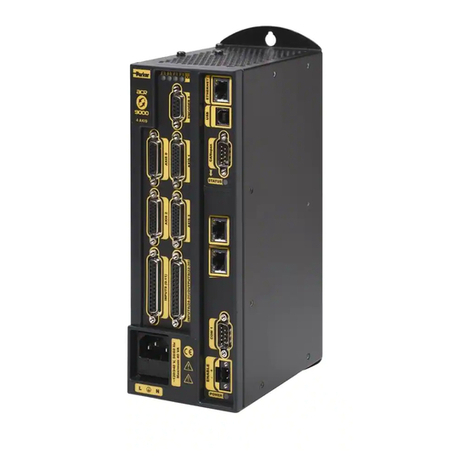
Parker
Parker ACR9000 installation guide
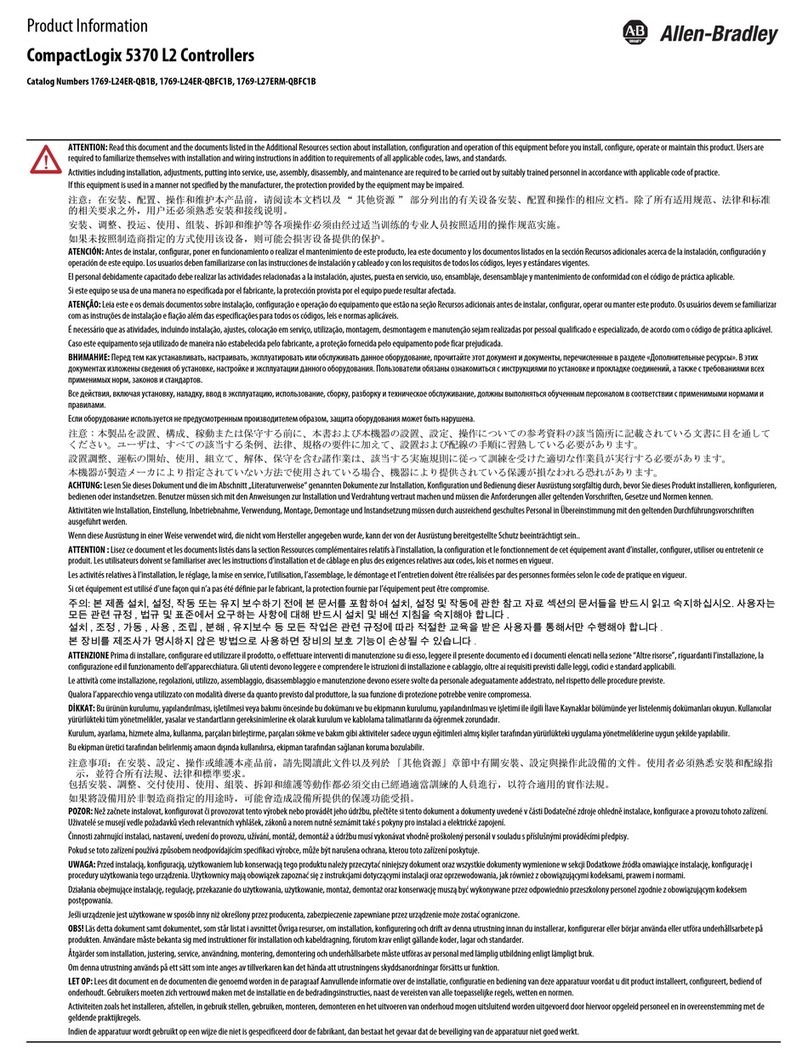
Rockwell Automation
Rockwell Automation Allen-Bradley CompactLogix 5370 L2 Series Product information
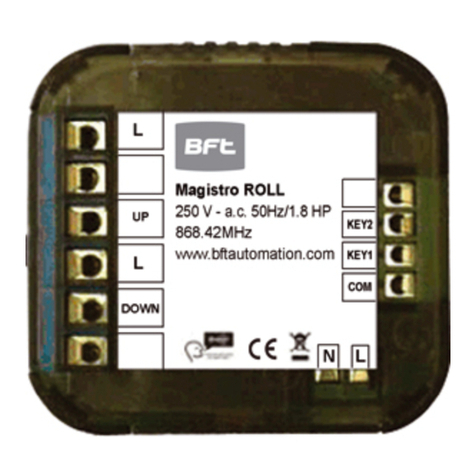
BFT
BFT Magistro ROLL quick guide
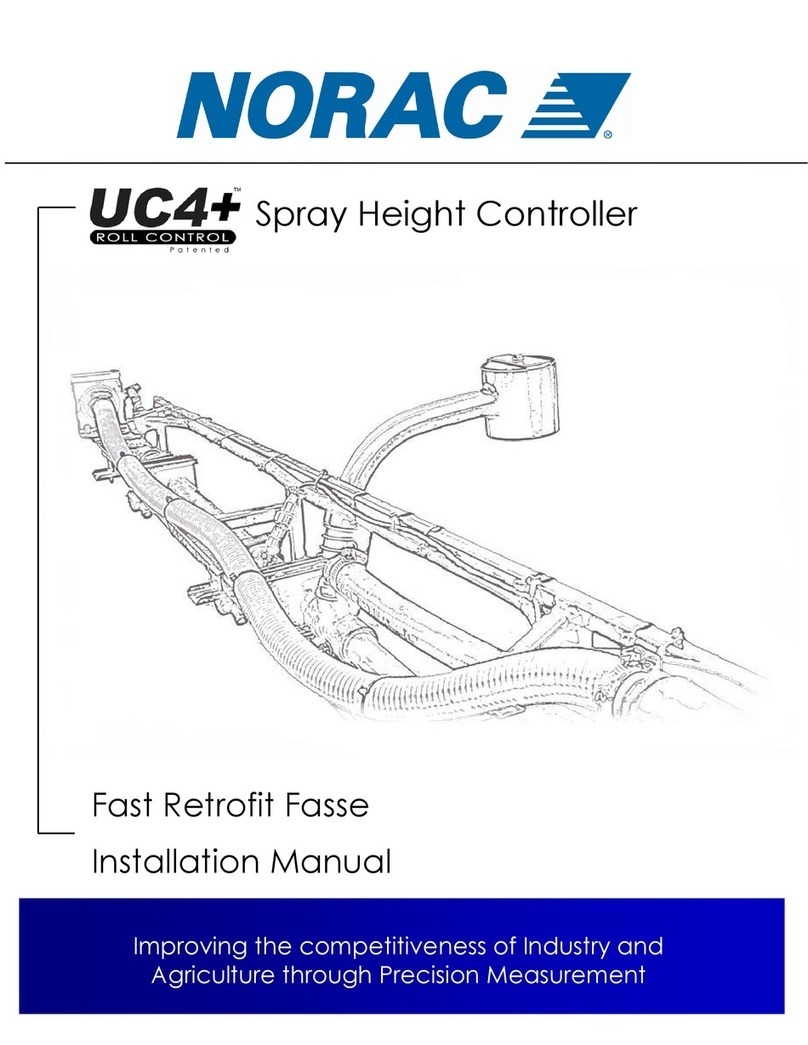
Norac
Norac UC4+ installation manual
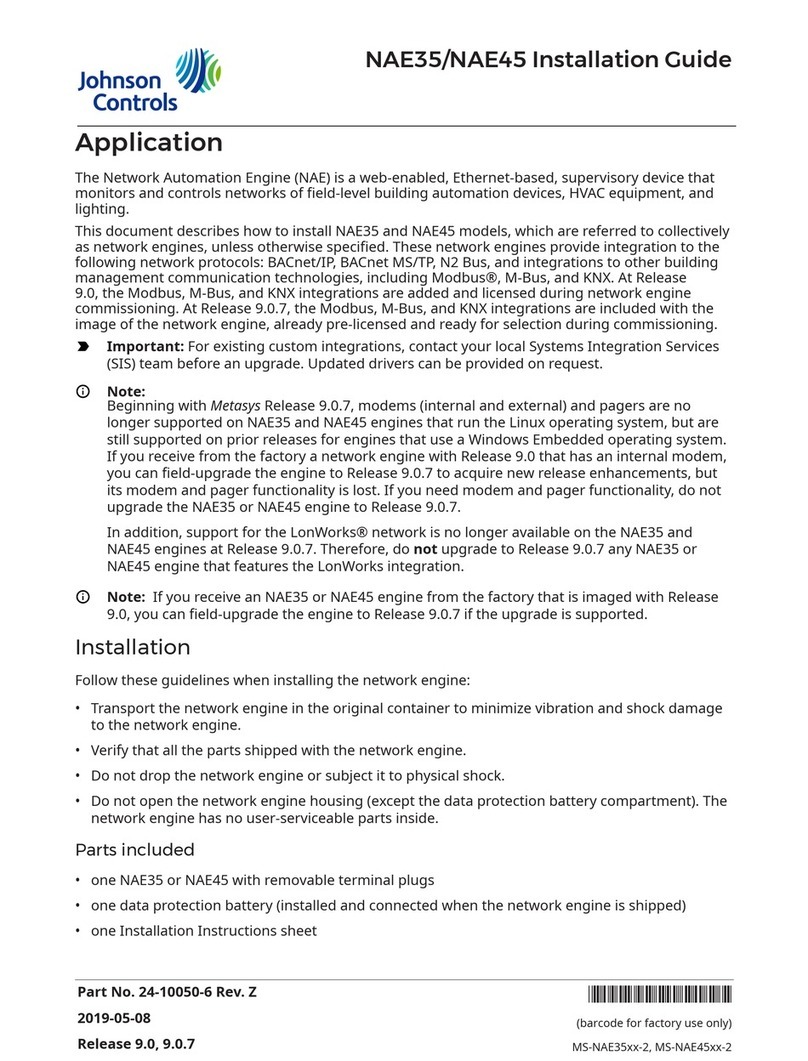
Johnson Controls
Johnson Controls NAE35 installation guide
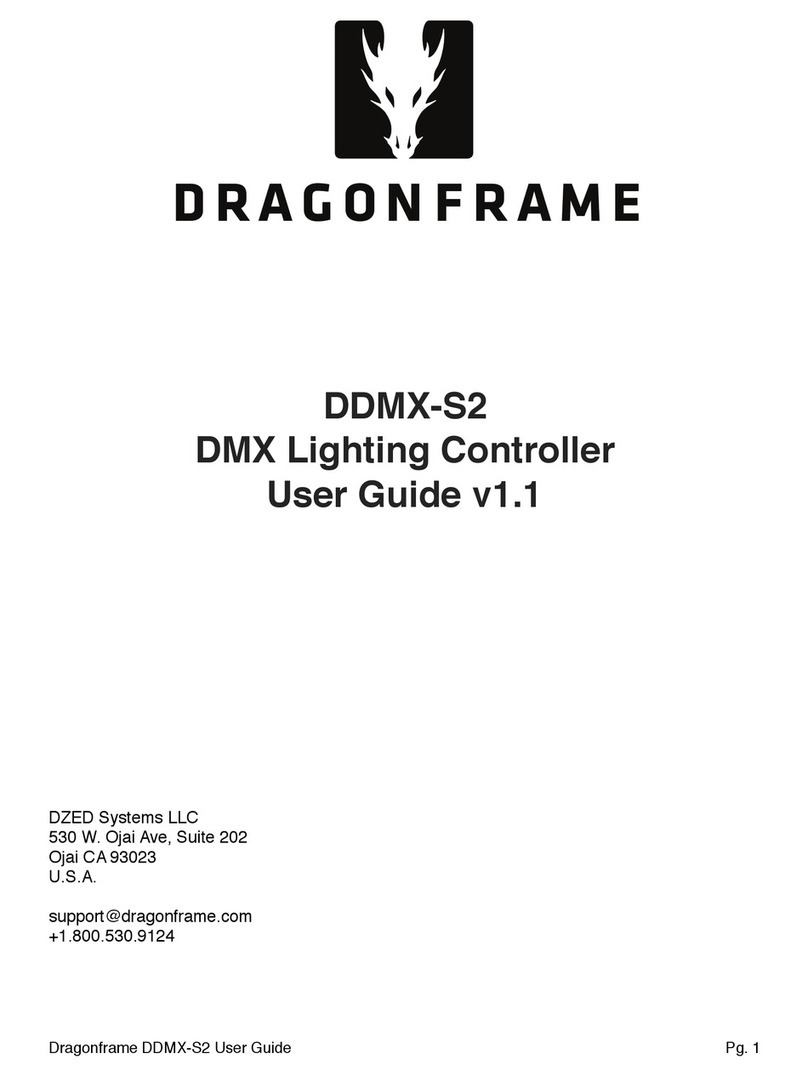
DRAGONFRAME
DRAGONFRAME DDMX-S2 user guide
